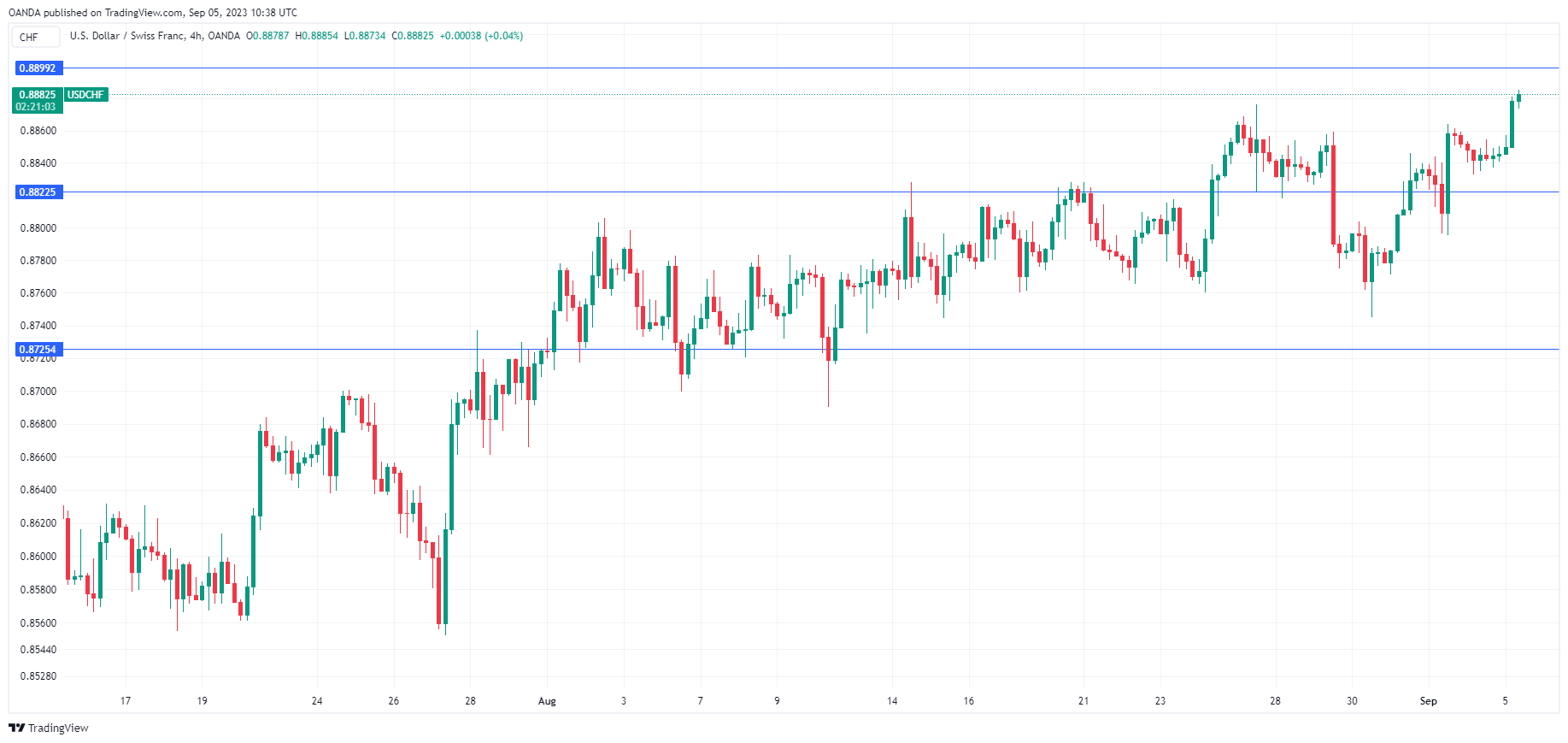- Swiss GDP stagnates in Q2
- Manufacturing, exports decline
The USD/CHF is in negative territory on Tuesday. In the European session, USD/CHF is trading at 0.8884, up 0.44%. The Swissie has lost over 1% since Wednesday and is trading at its lowest level seen mid-July.
The driver behind today’s losses was a disappointing Swiss GDP release for the second quarter. The economy flatlined in Q2, compared to a robust 0.9% gain q/q in the first quarter (adjusted for sporting events). Most of the GDP components pointed to a grim picture. Manufacturing fell 2.9% q/q, capital goods investment declined by 3.7% q/q and exports of goods slipped by 1.2% q/q.
Switzerland’s economy, which ran like a Swiss watch for decades, has fallen victim to weak global demand and high-interest rates. Manufacturing is struggling and business and consumer confidence remain weak. ING is projecting growth of just 0.7% in 2023 and 0.6% in 2024, compared to 2.7% in 2022.
Despite these pressing problems, Switzerland has kept inflation at very low levels. August inflation was unchanged at 1.6%, within the Swiss National Bank’s target range of 0%-2%. The SNB hasn’t been shy about intervening in the foreign exchange market to stabilize the exchange rate, which has helped to control external inflationary pressures.
The SNB has raised rates by 250 basis points in the current tightening cycle, with the cash rate currently at 1.75%. SNB Chair Thomas Jordan has backed up his hawkish rhetoric about containing inflation with five straight rate hikes (the central bank only meets on a quarterly basis). The SNB meets next on September 21st and is expected to raise rates by a quarter of a point.

USD/CHF Technical
- USD/CHF is putting pressure on resistance at 0.8899. Above, there is resistance at 0.8941
- 0.8822 and 0.8725 are providing support
